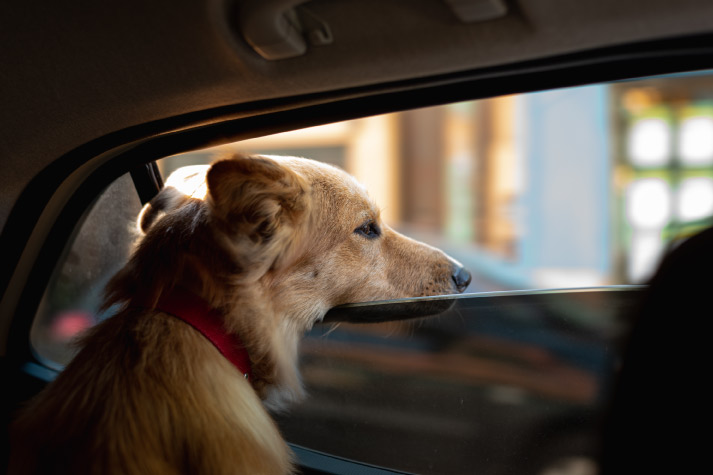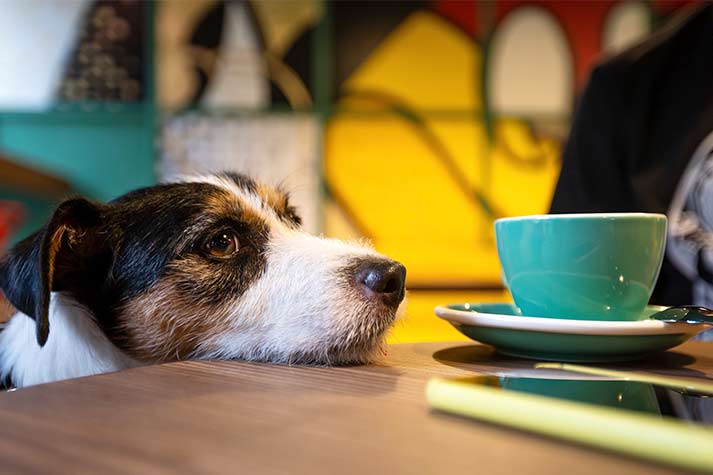
19 Feb
How to Manage a Motion-Sick Pet While Travelling
Traveling with a pet can be a joyful experience, but it can also become stressful if your furry companion suffers from motion sickness. Just like humans, pets can feel queasy in moving vehicles, leading to discomfort and anxiety. Understanding the causes, recognizing symptoms, and taking preventive measures can help ensure a smoother, more enjoyable journey for both you and your pet.
Why Do Pets Experience Motion Sickness?
Motion sickness in pets is primarily caused by conflicting sensory signals between the inner ear and vision, similar to how it occurs in humans. Puppies and kittens are particularly susceptible due to their developing inner ear structures, but some pets never outgrow it. Stress and anxiety can also trigger or worsen symptoms, making travel an unpleasant experience.
Symptoms of Motion Sickness in Pets
Recognizing the signs of motion sickness early can help you intervene before it escalates. Common symptoms include:
- Excessive drooling
- Whining, meowing, or barking
- Pacing, restlessness, or lethargy
- Vomiting or nausea
- Trembling or shaking
- Excessive panting
- Inappropriate elimination (urination or defecation in the car)
If your pet frequently experiences these symptoms, consult your veterinarian to rule out any underlying health concerns and discuss possible treatments.
How to Prevent Motion Sickness in Pets
Motion sickness doesn’t have to mean leaving your pet behind. With the right approach, you can make travel more comfortable for them.
Acclimating Your Pet to Car Rides
Gradually introducing your pet to car travel can help desensitize them to motion sickness. Follow these steps:
- Allow your pet to explore the stationary car to get familiar with the environment.
- Start with short drives around the block and gradually extend the duration.
- Reward your pet with treats, toys, or praise to create a positive association.
Travel Comfort Tips
- Avoid feeding your pet for at least two hours before travel to reduce the chances of nausea.
- Keep the car cool and well-ventilated.
- Use a pet seatbelt or travel crate to provide stability and security.
- Take frequent breaks on long trips to let your pet stretch and relieve themselves.
- Offer water regularly to prevent dehydration.
Managing Travel-Related Anxiety
Even if your pet isn’t prone to motion sickness, travel can still be stressful. Anxiety can make car rides uncomfortable and even worsen nausea. Look out for these signs of stress:
- Excessive vocalization (barking, whining, or meowing)
- Panting, drooling, or licking excessively
- Dilated pupils and pinned-back ears
- Attempting to escape or hide
- Destructive behavior
Tips to Ease Travel Anxiety
- Bring familiar items like blankets or a favorite toy to create a sense of security.
- Use a comfortable pet crate to provide a safe space.
- Play calming music or use pheromone sprays designed to reduce stress.
- Try natural calming supplements or consult your vet about anti-anxiety medications if needed.
What If Traveling Isn’t the Best Option?
Some pets never adjust to travel, no matter how much effort you put in. If your pet consistently experiences severe motion sickness or stress, consider alternatives like hiring a pet sitter or leaving them in a comfortable boarding facility. Prioritizing their well-being is more important than bringing them along on a trip.
Handling Sickness and Emergencies on the Road
Being prepared for potential health issues while traveling can make all the difference. Here’s how to handle unexpected situations:
Know Your Pet’s Normal Behavior
Understanding your pet’s habits can help you quickly identify when something is wrong. Keep an eye out for unusual behavior or any signs of distress.
Pack a Pet First-Aid Kit
A well-stocked first-aid kit should include:
- Antiseptic wipes and gauze for minor wounds
- Medications prescribed by your vet
- Tweezers for removing splinters or ticks
- A muzzle or restraint (for emergencies)
- Your vet’s contact details and emergency numbers
Schedule a Vet Visit Before Traveling
A pre-travel vet check-up ensures your pet is healthy and fit for travel. Your vet can provide advice on managing motion sickness and prescribe medications if necessary.
Be Aware of Travel Risks
Research your destination’s climate, local pet regulations, and potential health hazards. Have emergency vet contacts on hand in case your pet requires urgent care.
While motion sickness can make travel difficult, proper preparation can significantly reduce discomfort. By acclimating your pet to car rides, addressing their anxiety, and ensuring they are healthy before departure, you can create a stress-free travel experience. If travel remains a challenge, professional pet relocation services or alternative care arrangements might be the best option. Ultimately, your pet’s comfort and well-being should always come first, ensuring that every journey is a positive experience for both of you.






AUTHOR’S BIO
Carry My Pet
Passionate pet enthusiasts and globetrotters, dedicated to easing furry friends' journeys worldwide. Penning tales of compassion at CarryMyPet, where every relocation is a tail-wagging adventure.